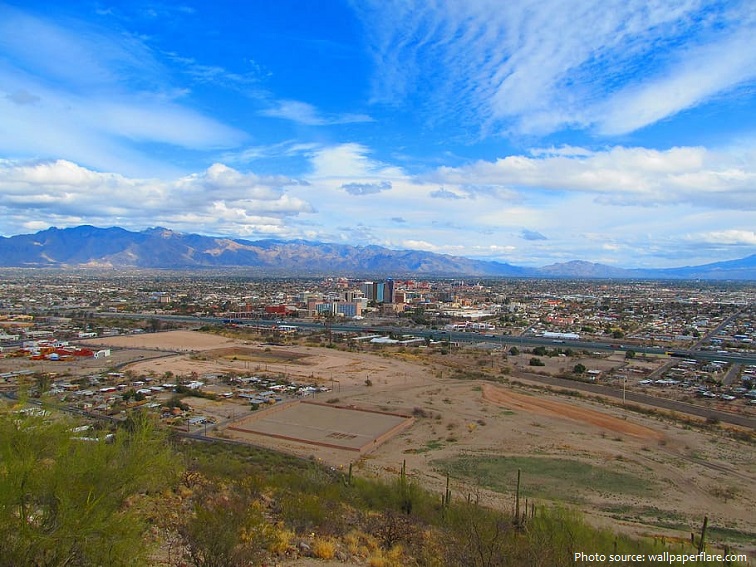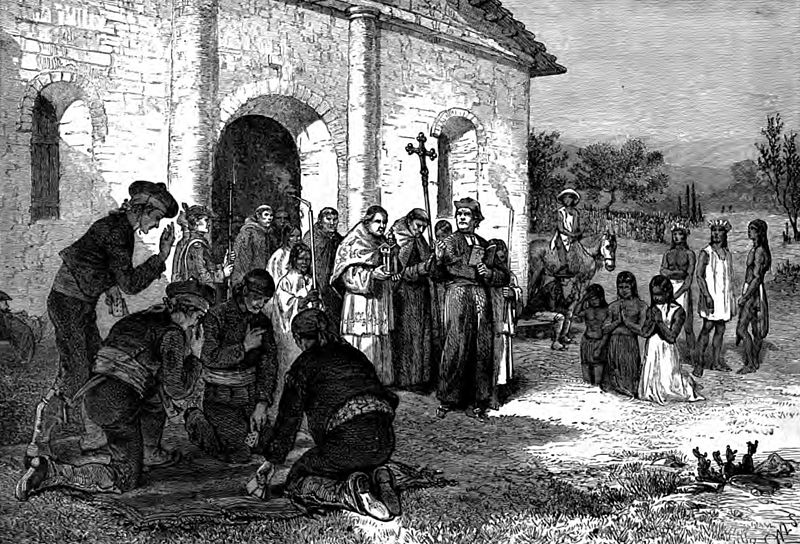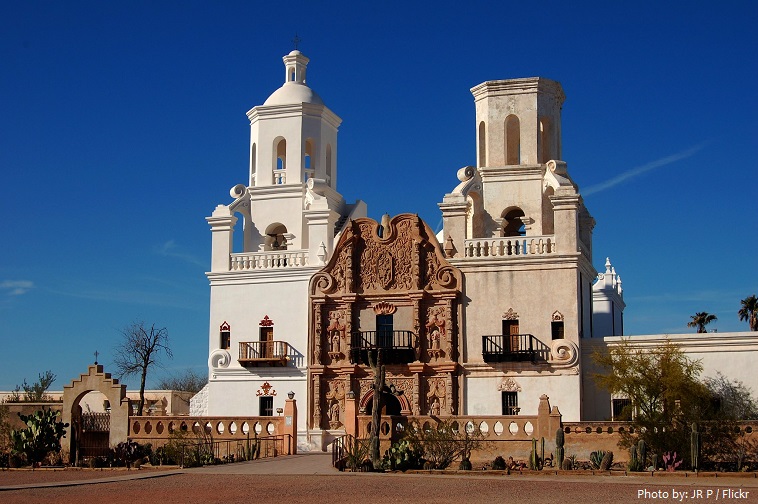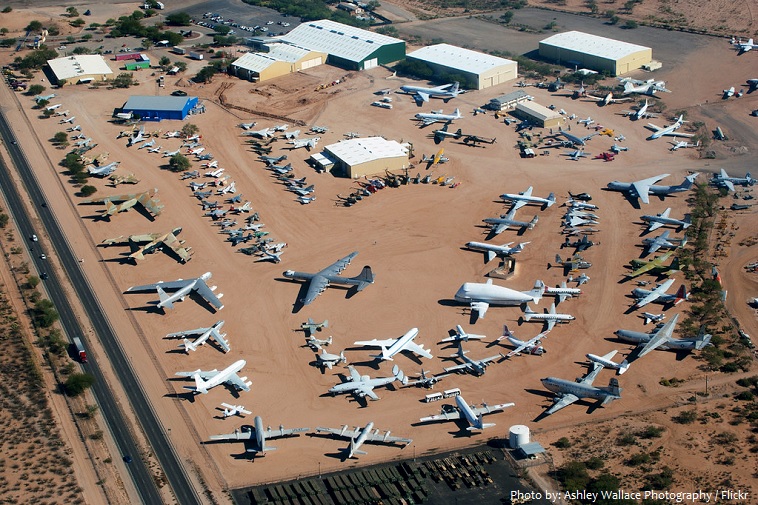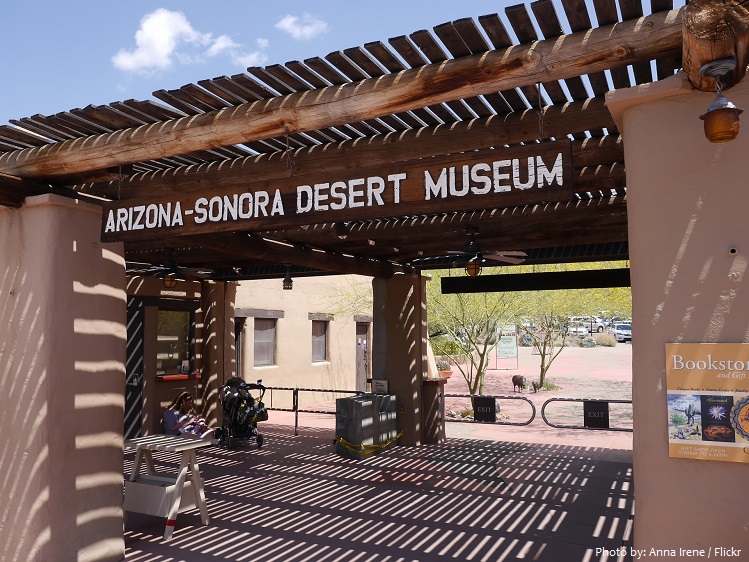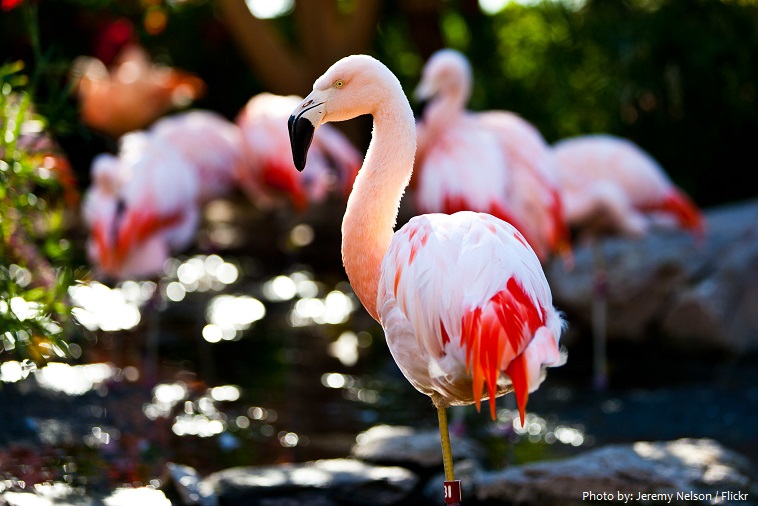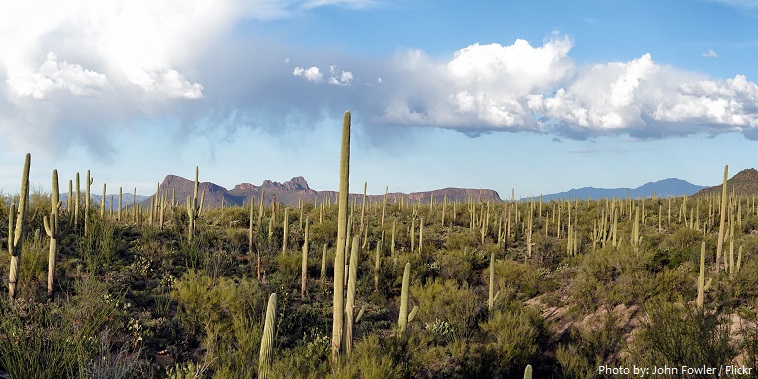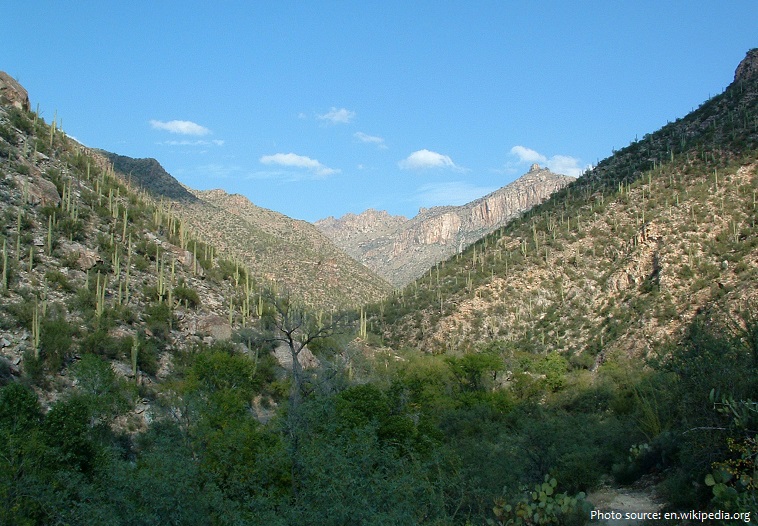Tucson is a city in Arizona, United States.
The city is situated along the Santa Cruz River on a hilly plain of the Sonoran Desert that is rimmed by the Santa Catalina and other mountains.
As of January 2020, the population of Tucson is about 550,000 people. It is the 33rd most populous city in the United States.
The city covers a total area of 617 square kilometers (238 square miles).
The average altitude is 728 metres (2,389 feet) above sea level.
The history of Tucson begins thousands of years ago. Paleo-Indians practiced plant husbandry and hunted game in the Santa Cruz River Valley from 10,000 B.C. or earlier.
Archaic peoples began making irrigation canals, some of the first in North America, around 1,200 B.C.
The Hohokam people lived in the Tucson area from around 450-1450 A.D, in a complex agricultural society.
Jesuit missionary Eusebio Francisco Kino founded the Mission San Xavier del Bac in 1700.
Through the 1700s, Spanish missionaries tried to get the Native Americans to convert to Catholicism and a Spanish lifestyle.
The Spanish built a fort at Tubac in 1751. It was moved to Tucson in 1775 where Hugo O’Conor, an Irishman working for the Spanish crown, officially founded Presidio San Augustin del Tucson.
It was included in the state of Sonora after Mexico gained independence from the Spanish Empire in 1821.
The United States acquired Tucson via treaty from Mexico in the Gadsden Purchase on June 8, 1854.
Tucson temporarily served as the western capital of the Confederate Arizona Territory during the American Civil War.
Tucson was Arizona’s largest city by population during the territorial period and early statehood, until it was surpassed by Phoenix between 1910 and 1920.
Since World War II the city has experienced remarkable growth, partly due to the annexation of suburbs.
Tucson’s dry, sunny climate and unique desert locale have made it a popular tourist and health resort and retirement community.
Mission San Xavier del Bac is an historic Spanish Catholic mission located about 16 kilometers (10 miles) south of downtown Tucson. The mission was founded in 1692 by Padre Eusebio Kino in the center of a centuries-old settlement of the Sobaipuri O’odham, a branch of the Akimel or River O’odham located along the banks of the Santa Cruz River. The mission that survives today was built between 1783 and 1797, which makes it the oldest European structure in Arizona.
The Pima Air & Space Museum, located in Tucson, Arizona, is one of the world’s largest non-government funded aerospace museums. The museum features a display of nearly 300 aircraft spread out over 32 hectares 80 acres on a campus occupying 51 hectares (127 acres). It has also been the home to the Arizona Aviation Hall of Fame since 1991.
The Arizona-Sonora Desert Museum is a 40-hectare (98-acre) zoo, aquarium, botanical garden, natural history museum, publisher, and art gallery founded in 1952. Located just west of Tucson, it features 3.2 kilometers (2 miles) of walking paths traversing 8.5 hectares (21 acres) of desert landscape. It is one of the most visited attractions in Southern Arizona. The museum is home to more than 230 animal species and 1,200 varieties of plants.
The Reid Park Zoo, founded in 1967, is a 10-hectare (24-acre) city-owned and operated non-profit zoo located within Reid Park in Tucson, Arizona. The zoo features more than 500 animals. It was unofficially established in 1965 by Gene Reid, the parks and recreation director at the time.
Saguaro National Park is consists of two separate areas—the Tucson Mountain District (TMD) about 16 km (10 mi) west of the city of Tucson and the Rincon Mountain District (RMD) about 16 km (10 mi) east of the city—that preserve Sonoran Desert landscapes, fauna, and flora, including the giant saguaro cactus. The park cover 37,000 hectares (92,000 acres).
Sabino Canyon is a significant canyon located north of Tucson. It is a popular recreation area for residents and visitors of Southern Arizona, providing a place to walk, hike or ride. Minutes away from the desert are large waterfalls along Sabino Creek with minor bridges constructed over them. Wildlife in the canyon includes deer, javelina, skunks, tortoises, rattlesnakes and mountain lions.
Old Tucson is an American movie studio and theme park just west of Tucson, Arizona, adjacent to the Tucson Mountains and close to the western portion of Saguaro National Park. Built in 1939 for the movie Arizona (1940), it has been used for the filming of many movies and television westerns since then, such as Gunfight at the O.K. Corral (1957), Rio Bravo (1959), El Dorado (1966), and Little House on the Prairie TV series of the 1970s-1980s.
The city also has more than 120 parks, from small and local to larger parks with ballfields, natural areas, lakes, 5 public golf courses.
The Spanish name of the city, Tucsón, is derived from the O’odham Cuk Ṣon, meaning “(at the) base of the black [hill]”, a reference to a basalt-covered hill now known as Sentinel Peak. Tucson is sometimesreferred to as “The Old Pueblo”.
In 2017, Tucson was the first American city to be designated a “City of Gastronomy” by UNESCO.
Tucson is well known for its Sonoran-style Mexican food. But since the turn of the century, ethnic restaurants and fine dining choices have proliferated.
The Sonoran hot dog is very popular in Tucson. This is a hot dog wrapped in bacon and grilled, served on a bolillo-style hot dog bun, and topped with pinto beans, onions, tomatoes, and a variety of additional condiments, often including mayonnaise, mustard, and jalapeño salsa.

